You are using an out of date browser. It may not display this or other websites correctly.
You should upgrade or use an alternative browser.
You should upgrade or use an alternative browser.
Note: 5 crore = 50 million
@Indos @AlphaMike et al.
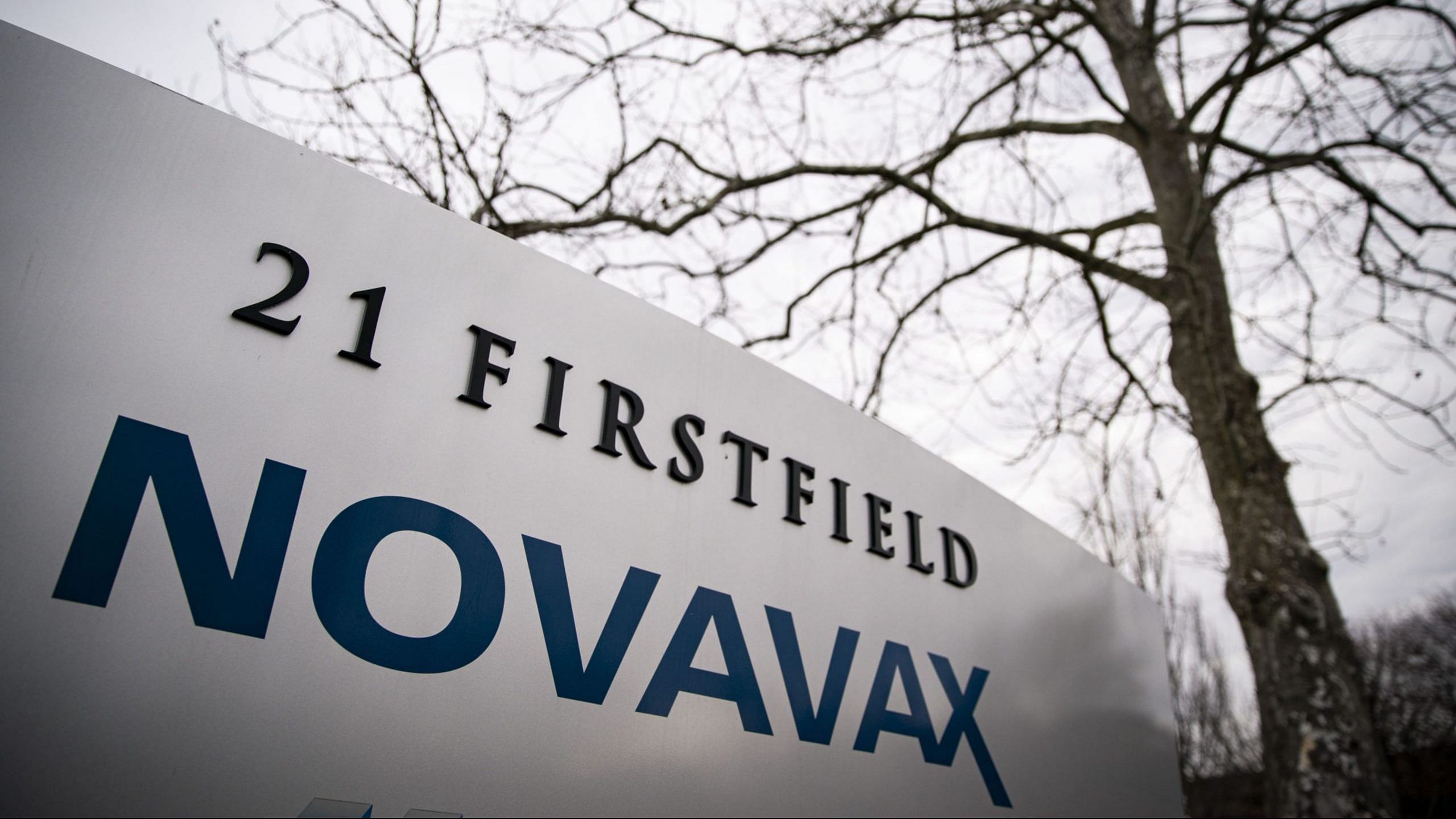
 theprint.in
theprint.in
New Delhi: The Indian government has permitted export of 5 crore doses of Covovax, a COVID-19 vaccine domestically produced here by the Serum Institute of India (SII), as the jab has not yet been approved for emergency use in the country, official sources said on Monday.
The drug major SII has been allowed to export 50 lakh vials, equivalent to 5 crore doses, of Covovax to Indonesia, they said.
According to the sources, the SII submitted an application to the Drugs Controller General of India (DCGI) seeking grant of emergency use authorisation for Covovax on May 21 and it is still awaiting approval from the drug regulator.
Recently, Prakash Kumar Singh, Director, Government and Regulatory Affairs at SII, wrote to the DCGI seeking no objection certification to export 50 lakh vials. He also stated that one crore vaccine doses manufactured by the company will expire in December this year, the official sources said.
“M/s PT Indofarma Tbk, Indonesia wants to purchase these quantities and they have already issued a purchase order of 50 lakh vials to us. If we are not able to export this quantity, then it will be an international wastage of much needed life-saving COVID-19 vaccine during the pandemic,” an official source quoted Singh as having stated in the application.
The expiry date of approximately one crore doses of the Covovax vaccine is December 2021, he said.
This export will not affect COVID-19 vaccine supplies to India as a huge stock of Covishield is available to meet requirements of the country, Singh is learnt to have conveyed.
The DCGI had referred the matter to the Union Health Ministry for approval and after the ministry’s intervention, the DCGI granted export NOC to SII without Indian EUA, the source said.
The DCGI office had granted SII permission to manufacture and stock Covovax on May 17 following which the Pune-based firm manufactured and stockpiled the vaccine doses.
In August 2020, US-based vaccine maker Novavax, Inc had announced a licence agreement with the SII for the development and commercialisation of NVX-CoV2373, its COVID-19 vaccine candidate, in low and middle-income countries and India.—PTI
@Indos @AlphaMike et al.

Serum Institute of India gets govt nod to export 5 crore doses of Covovax to Indonesia
Covovax has been developed by Novavax and is being manufactured by the Pune-based SII, but is not cleared for emergency use in India.
 theprint.in
theprint.in
New Delhi: The Indian government has permitted export of 5 crore doses of Covovax, a COVID-19 vaccine domestically produced here by the Serum Institute of India (SII), as the jab has not yet been approved for emergency use in the country, official sources said on Monday.
The drug major SII has been allowed to export 50 lakh vials, equivalent to 5 crore doses, of Covovax to Indonesia, they said.
According to the sources, the SII submitted an application to the Drugs Controller General of India (DCGI) seeking grant of emergency use authorisation for Covovax on May 21 and it is still awaiting approval from the drug regulator.
Recently, Prakash Kumar Singh, Director, Government and Regulatory Affairs at SII, wrote to the DCGI seeking no objection certification to export 50 lakh vials. He also stated that one crore vaccine doses manufactured by the company will expire in December this year, the official sources said.
“M/s PT Indofarma Tbk, Indonesia wants to purchase these quantities and they have already issued a purchase order of 50 lakh vials to us. If we are not able to export this quantity, then it will be an international wastage of much needed life-saving COVID-19 vaccine during the pandemic,” an official source quoted Singh as having stated in the application.
The expiry date of approximately one crore doses of the Covovax vaccine is December 2021, he said.
This export will not affect COVID-19 vaccine supplies to India as a huge stock of Covishield is available to meet requirements of the country, Singh is learnt to have conveyed.
The DCGI had referred the matter to the Union Health Ministry for approval and after the ministry’s intervention, the DCGI granted export NOC to SII without Indian EUA, the source said.
The DCGI office had granted SII permission to manufacture and stock Covovax on May 17 following which the Pune-based firm manufactured and stockpiled the vaccine doses.
In August 2020, US-based vaccine maker Novavax, Inc had announced a licence agreement with the SII for the development and commercialisation of NVX-CoV2373, its COVID-19 vaccine candidate, in low and middle-income countries and India.—PTI
Parry Brima
Contributor
I might understand the last paragraph wrong, but does it mean Covovax is the Indian licensed version of Novavax?
Novavax is the vaccine maker. Covovax is the name of the vaccine made by Serum Institute under some license agreement. I don't think the names of the vaccines are different in USA and India.I might understand the last paragraph wrong, but does it mean Covovax is the Indian licensed version of Novavax?
Parry Brima
Contributor
Novavax is the vaccine maker. Covovax is the name of the vaccine made by Serum Institute under some license agreement. I don't think the names of the vaccines are different in USA and India.
Well, the Indonesian government actually have a deal for 20 mil doses of Novavax. The news called it Novavax vaccine (CNN Indonesia reported on 12 Oct below).
The news said that we're looking for 50 mil doses though, so if Covovax is the Indian licensed version of Novavax then it means that's where the Indo government trying to get the rest of them.

Cuma Dapat 20 Juta Vaksin Novavax, Menkes Cari Sumber Lain
Dari kesepakatan mula sebanyak 50 juta dosis, Menkes BGS menyatakan Indonesia gagal mendapatkan akses 50 juta dosis vaksin Novavax.
 www.cnnindonesia.com
www.cnnindonesia.com
What's the story here @Nilgiri
There's been rumours floating around for a year or more India has good chance securing this deal....given significant improvement of relations since Mahathir left the picture and palm oil imports resumed. In fact the latter might be used as part of the payment route.
RMAF has long fruitful relationship with IAF (training programs etc augmented by shared airframes like Mig-29 and SU-30) that many do not know about.
Tejas is also a very good candidate for LIFT (past its size) as it incorporates lot of the latest technologies within it that will stay relevant for decades to come. The GE-404 is especially good standard engine for air forces these days....GE has vast established MRO network....so overhaul times etc are very good (a problem with Russian engines).
@Viva_vietnamm et al.

 economictimes.indiatimes.com
economictimes.indiatimes.com
Amid growing Chinese aggression in the ASEAN region, this is Singh's first trip to South East Asia since the pandemic.
Defence minister Rajnath Singh will likely visit Vietnam in the second week of January to celebrate the golden jubilee of the establishment of diplomatic ties between New Delhi and Ho Chi Minh City.
Defence exports and joint collaboration including training and maintenance of defence equipment (both India and Vietnam use Soviet- and Russian-made defence equipment) could top the agenda of the three-day visit, ET has learnt. Vietnam is also interested in purchasing the Brahmos missile jointly produced by India and Russia.
Amid growing Chinese aggression in the ASEAN region, this is Singh's first trip to South East Asia since the pandemic.
Last year, Singh and his Vietnamese counterpart Sr Lt Gen Phan Van Giang held wide-ranging conversation on implementing the joint defence plan. During the virtual interaction, both ministers reviewed the progress on the current initiatives and expressed commitment to further enhance engagements between the defence forces of the two countries under the framework of India-Vietnam Comprehensive Strategic Partnership (2016) and under the guidance of the Joint Vision for Peace, Prosperity and People signed during the Virtual Summit between the prime ministers of the two countries in December 2020. Both the ministers acknowledged the significance of the Joint Vision Statement of 2015-20 in strengthening defence cooperation engagements between both the countries thus far.
The leaders had agreed to initiate measures to enhance cooperation in the defence industry and technology domain. In a series of tweets following the virtual meet, Singh had termed the relationship between India and Vietnam as "strong and effective". He had said: "India attaches great importance to its bilateral defence cooperation with Vietnam. Both India and Vietnam share a long-standing tradition of helping each other in difficult times. We have achieved substantial progress in defence industry cooperation in recent years."
India and Vietnam had upgraded their ties to the level of Comprehensive Strategic Partnership (CSP) in 2016 and President of Vietnam's National Assembly visited India in December to celebrate five years of CSP. India's $100 million defence Line of Credit to Vietnam has been utilised for naval equipment. India has been training Vietnamese military personnel and also helping them with maintenance of some defence products.

Rajnath Singh's Vietnam visit may add momentum to Brahmos plan
Defence exports and joint collaboration including training and maintenance of defence equipment (both India and Vietnam use Soviet- and Russian-made defence equipment) could top the agenda of the three-day visit, ET has learnt. Vietnam is also interested in purchasing the Brahmos missile jointly...
Rajnath Singh's Vietnam visit may add momentum to Brahmos plan
Defence exports and joint collaboration including training and maintenance of defence equipment (both India and Vietnam use Soviet- and Russian-made defence equipment) could top the agenda of the three-day visit, ET has learnt. Vietnam is also interested in purchasing the Brahmos missile jointly produced by India and Russia.
Amid growing Chinese aggression in the ASEAN region, this is Singh's first trip to South East Asia since the pandemic.
Defence minister Rajnath Singh will likely visit Vietnam in the second week of January to celebrate the golden jubilee of the establishment of diplomatic ties between New Delhi and Ho Chi Minh City.
Defence exports and joint collaboration including training and maintenance of defence equipment (both India and Vietnam use Soviet- and Russian-made defence equipment) could top the agenda of the three-day visit, ET has learnt. Vietnam is also interested in purchasing the Brahmos missile jointly produced by India and Russia.
Amid growing Chinese aggression in the ASEAN region, this is Singh's first trip to South East Asia since the pandemic.
Last year, Singh and his Vietnamese counterpart Sr Lt Gen Phan Van Giang held wide-ranging conversation on implementing the joint defence plan. During the virtual interaction, both ministers reviewed the progress on the current initiatives and expressed commitment to further enhance engagements between the defence forces of the two countries under the framework of India-Vietnam Comprehensive Strategic Partnership (2016) and under the guidance of the Joint Vision for Peace, Prosperity and People signed during the Virtual Summit between the prime ministers of the two countries in December 2020. Both the ministers acknowledged the significance of the Joint Vision Statement of 2015-20 in strengthening defence cooperation engagements between both the countries thus far.
The leaders had agreed to initiate measures to enhance cooperation in the defence industry and technology domain. In a series of tweets following the virtual meet, Singh had termed the relationship between India and Vietnam as "strong and effective". He had said: "India attaches great importance to its bilateral defence cooperation with Vietnam. Both India and Vietnam share a long-standing tradition of helping each other in difficult times. We have achieved substantial progress in defence industry cooperation in recent years."
India and Vietnam had upgraded their ties to the level of Comprehensive Strategic Partnership (CSP) in 2016 and President of Vietnam's National Assembly visited India in December to celebrate five years of CSP. India's $100 million defence Line of Credit to Vietnam has been utilised for naval equipment. India has been training Vietnamese military personnel and also helping them with maintenance of some defence products.
Cool, Hopefully our relationship will get better and better and Vietnam will receive more modern weapons from India@Viva_vietnamm et al.

Rajnath Singh's Vietnam visit may add momentum to Brahmos plan
Defence exports and joint collaboration including training and maintenance of defence equipment (both India and Vietnam use Soviet- and Russian-made defence equipment) could top the agenda of the three-day visit, ET has learnt. Vietnam is also interested in purchasing the Brahmos missile jointly...economictimes.indiatimes.com
Rajnath Singh's Vietnam visit may add momentum to Brahmos plan
Defence exports and joint collaboration including training and maintenance of defence equipment (both India and Vietnam use Soviet- and Russian-made defence equipment) could top the agenda of the three-day visit, ET has learnt. Vietnam is also interested in purchasing the Brahmos missile jointly produced by India and Russia.
Amid growing Chinese aggression in the ASEAN region, this is Singh's first trip to South East Asia since the pandemic.
Defence minister Rajnath Singh will likely visit Vietnam in the second week of January to celebrate the golden jubilee of the establishment of diplomatic ties between New Delhi and Ho Chi Minh City.
Defence exports and joint collaboration including training and maintenance of defence equipment (both India and Vietnam use Soviet- and Russian-made defence equipment) could top the agenda of the three-day visit, ET has learnt. Vietnam is also interested in purchasing the Brahmos missile jointly produced by India and Russia.
Amid growing Chinese aggression in the ASEAN region, this is Singh's first trip to South East Asia since the pandemic.
Last year, Singh and his Vietnamese counterpart Sr Lt Gen Phan Van Giang held wide-ranging conversation on implementing the joint defence plan. During the virtual interaction, both ministers reviewed the progress on the current initiatives and expressed commitment to further enhance engagements between the defence forces of the two countries under the framework of India-Vietnam Comprehensive Strategic Partnership (2016) and under the guidance of the Joint Vision for Peace, Prosperity and People signed during the Virtual Summit between the prime ministers of the two countries in December 2020. Both the ministers acknowledged the significance of the Joint Vision Statement of 2015-20 in strengthening defence cooperation engagements between both the countries thus far.
The leaders had agreed to initiate measures to enhance cooperation in the defence industry and technology domain. In a series of tweets following the virtual meet, Singh had termed the relationship between India and Vietnam as "strong and effective". He had said: "India attaches great importance to its bilateral defence cooperation with Vietnam. Both India and Vietnam share a long-standing tradition of helping each other in difficult times. We have achieved substantial progress in defence industry cooperation in recent years."
India and Vietnam had upgraded their ties to the level of Comprehensive Strategic Partnership (CSP) in 2016 and President of Vietnam's National Assembly visited India in December to celebrate five years of CSP. India's $100 million defence Line of Credit to Vietnam has been utilised for naval equipment. India has been training Vietnamese military personnel and also helping them with maintenance of some defence products.
Cool, Hopefully our relationship will get better and better and Vietnam will receive more modern weapons from India
Akash-NG SAM could also be another item.
Fingers crossed bro:
Though Vietnam is pro-Russia, India is one among the primary allies of Vietnam.

90% of the components in Brahmos are of Indian origin including the seeker, booster, onboard electronic modules, airframe etc with ramjet being the only Russian component going in these missiles. Even if Russia pitches Oniks or the likes, Brahmos and it's variants are more advanced than their Oniks counterparts and India bet heavily on Brahmos with multiple versions, extended ranges, capability to launch and strike from land/sea/air and the upcoming hypersonic variant
Also, a lot of US & EU based companies moved their manufacturing bases from China to Vietnam. If the later wants to avoid CAATSA, they're better of going for the Brahmos which has more 90% Indian components over the Oniks which is 100% Russian. If US is concerned about the Russian ramjet, we can always replace with an indigenous alternative used is several other DRDO missiles and keep Russia happy by paying em their share of royalty
90% of the components in Brahmos are of Indian origin including the seeker, booster, onboard electronic modules, airframe etc with ramjet being the only Russian component going in these missiles. Even if Russia pitches Oniks or the likes, Brahmos and it's variants are more advanced than their Oniks counterparts and India bet heavily on Brahmos with multiple versions, extended ranges, capability to launch and strike from land/sea/air and the upcoming hypersonic variant
Also, a lot of US & EU based companies moved their manufacturing bases from China to Vietnam. If the later wants to avoid CAATSA, they're better of going for the Brahmos which has more 90% Indian components over the Oniks which is 100% Russian. If US is concerned about the Russian ramjet, we can always replace with an indigenous alternative used is several other DRDO missiles and keep Russia happy by paying em their share of royalty
Though Vietnam is pro-Russia, India is one among the primary allies of Vietnam.

90% of the components in Brahmos are of Indian origin including the seeker, booster, onboard electronic modules, airframe etc with ramjet being the only Russian component going in these missiles. Even if Russia pitches Oniks or the likes, Brahmos and it's variants are more advanced than their Oniks counterparts and India bet heavily on Brahmos with multiple versions, extended ranges, capability to launch and strike from land/sea/air and the upcoming hypersonic variant
Also, a lot of US & EU based companies moved their manufacturing bases from China to Vietnam. If the later wants to avoid CAATSA, they're better of going for the Brahmos which has more 90% Indian components over the Oniks which is 100% Russian. If US is concerned about the Russian ramjet, we can always replace with an indigenous alternative used is several other DRDO missiles and keep Russia happy by paying em their share of royalty
we VN-India should work together to create core technologies like 5G/ chips/ missile-jet fighter's components etc. Thats the win-win for both
otherwhile, we will have to keep buying missile, jet fighter, chips from US-Russia till the rest of our life
Totally agree...I hope our govt grows a pair and proactively engage with all ASEAN countries to increase trade while reducing imports from China. Maybe formulate plans on how ASEAN and India can develop industries/manufacturing expertise for basic goods as a start which are currently being imported from chinawe VN-India should work together to create core technologies like 5G/ chips/ missile-jet fighter's components etc. Thats the win-win for both
otherwhile, we will have to keep buying missile, jet fighter, chips from US-Russia till the rest of our life
Given our limitations in terms of funding, test facilities, research orgs...we should pool in resources and actively collaborate in defence projects
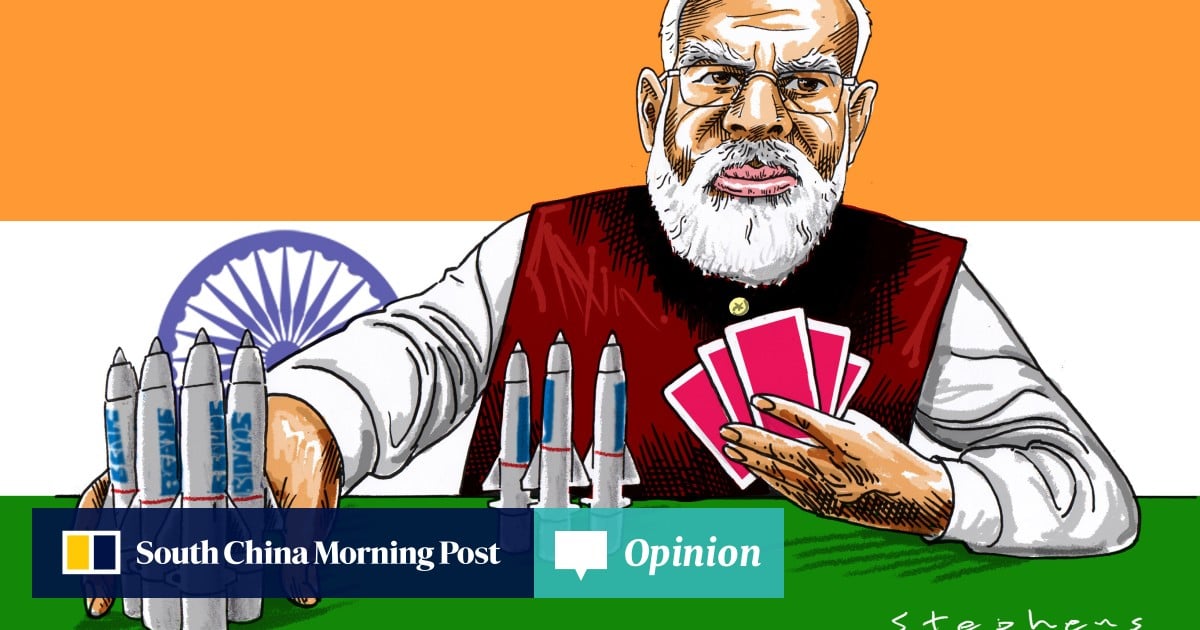
Opinion | Why India’s missile sale to the Philippines is a milestone for both
The deal can serve as a strategic springboard for expanded defence cooperation between New Delhi and key Southeast Asian countries. It also sets a major precedent for the Philippines, which is gradually diversifying its pool of defence suppliers after decades of US dependence.
- The deal can serve as a strategic springboard for expanded defence cooperation between New Delhi and key Southeast Asian countries
- It also sets a major precedent for the Philippines, which is gradually diversifying its pool of defence suppliers after decades of US dependence
“A journey of a thousand miles begins with a single step”, goes the famous Chinese proverb ascribed to Taoist philosopher Lao Tzu. In both life and law, a single landmark decision can set in motion a chain of events with major long-term repercussions.
In many ways, the same principle applies to the recently concluded BrahMos missile deal between India and the Philippines. By every indication, the sale of three missile batteries is unlikely to change the regional military balance.
The US$375 million agreement, however, is likely to be the opening act in India’s increasingly defence-oriented “Look East” policy, further propelling the Asian power’s plans to become a major player in the global defence industry.
The sale can serve as a strategic springboard for expanded, hi-tech defence cooperation between New Delhi and key Southeast Asian countries. It also sets a major precedent for the Philippines, which is gradually diversifying its pool of defence suppliers after decades of overdependence on the West.
For a long time, India stood as the world’s largest arms importer. Between 2016 and 2020, it was responsible for almost 10 per cent of total global arms imports, according to the Stockholm International Peace Research Institute (Sipri).
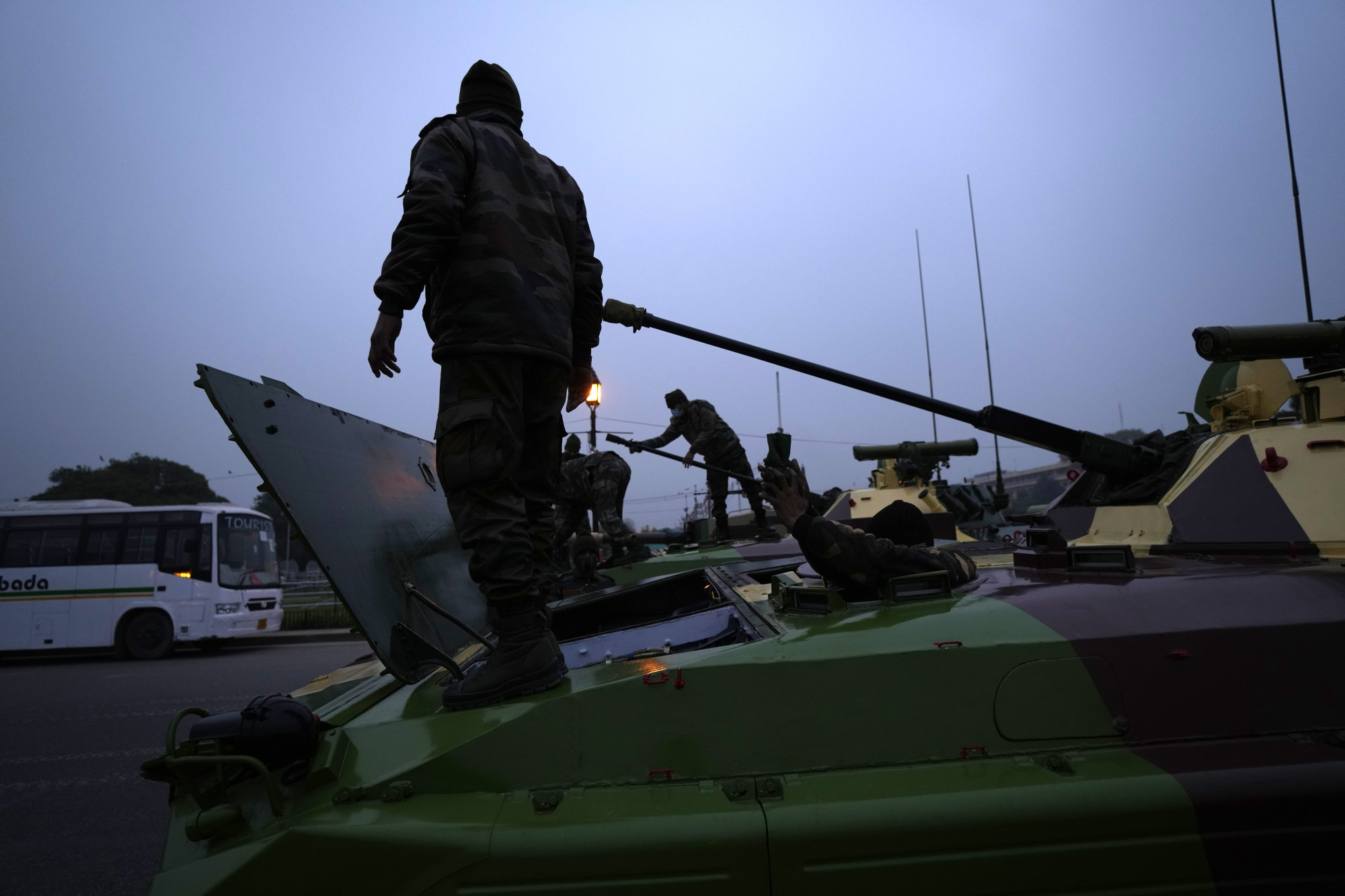
Indian army soldiers clean their armoured vehicles during rehearsals for the upcoming Republic Day parade in New Delhi, India, on January 17. Between 2016 and 2020, India was responsible for almost 10 per cent of total global arms imports, according to Sipri. Photo: AP
Squeezed between two rivals, China and Pakistan, India has been on a massive spending spree to enhance its defensive capabilities. From French fighter jets to Russian missile defence systems, New Delhi has been sourcing cutting-edge military hardware from both the West and East.
It was only after a whopping 61 per cent increase in its defence imports between 2016 and 2020 that Saudi Arabia managed to dethrone India as the world’s biggest arms customer. Eager to achieve self-sufficiency and enhance India’s industrial-military complex, the Modi administration has been steadily building up the country’s defence industry.
India rolled back its defence imports by 33 per cent during the 2011-2015 and 2016-2020 periods. At the same time, it aims to increase its defence exports to US$5 billion by 2024 and increase the local content of its major defence acquisitions by collaborating with leading powers such as Russia, Japan and France.
The BrahMos – a portmanteau coined from the names of two rivers, India’s Brahmaputra and Russia’s Moskva – is actually the product of high-level collaboration between India and Russia. India’s sale of the supersonic missile to the Philippines, a US ally and major claimant state in the South China Sea, was by no means certain.
After all, New Delhi’s strategic reticence, particularly fears of provoking China, torpedoed previous attempts at exporting Indian defence items, most prominently the Prithvi surface-to-surface short-range ballistic missile deal with Vietnam.
India boosts military presence as border talks with China remain stalled
The BrahMos is a landmark acquisition for the Philippines. Yet, it’s doubtful whether it will significantly alter the balance of military power in the region, especially given China’s deployment of state-of-the-art missile defence systems as well as its burgeoning hypersonic missile technology.The Philippines is expected to deploy the BrahMos batteries near the South China Sea. But given that Beijing has been rapidly expanding its military footprint across a host of artificially expanded islands, one can dismiss the Philippines’ latest purchase as “too little, too late”.
However, beyond symbolism, there are three reasons the BrahMos deal is highly consequential. First, it marks a major shift for Manila, which has historically relied on American-made weaponry. The BrahMos, derived from Russian technology, provides a great impetus for the Philippine defence establishment to embrace a new procurement doctrine, which mixes and matches cutting-edge hardware from a diverse set of suppliers.
The timing couldn’t be better, since the Philippines is in the midst of a multibillion-dollar military modernisation programme, with a focus on the acquisition of strategic weapons systems and advanced warships, submarines and fighter jets. Manila’s ultimate aim is to develop a “minimum deterrence” capability in an increasingly uncertain geopolitical environment.Second, the BrahMos deal places the Philippines in a good position to purchase and operate upgraded versions of the missile system, including the BrahMos II hypersonic missile, which reportedly has a Mach 7 speed.
With BrahMos Aerospace rapidly expanding its production capacity, thanks to a 200-acre manufacturing plant under construction, India is in a good position to offer a large number of upgraded, next-generation strategic missile systems to key customers such as the Philippines.
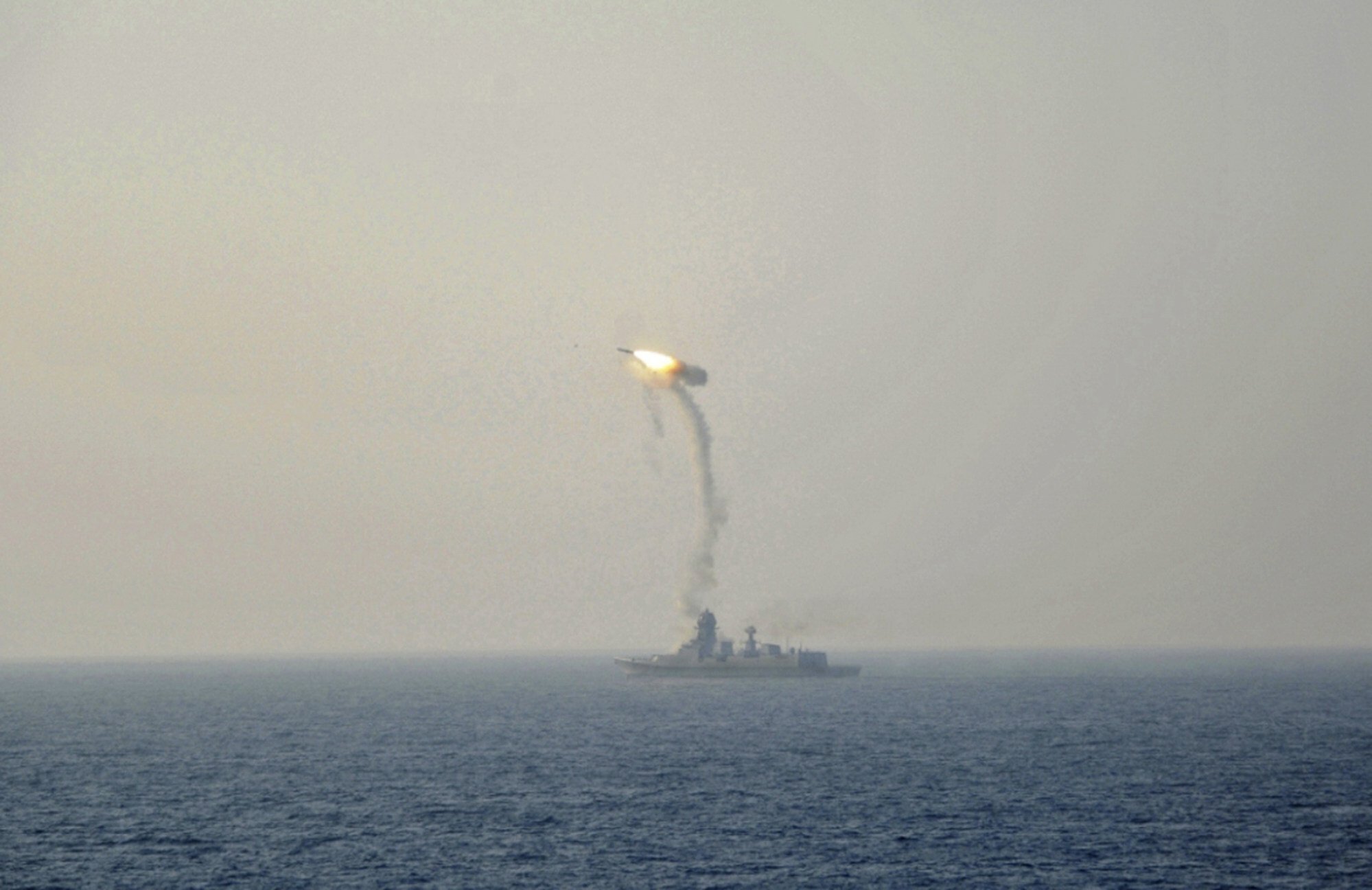
A BrahMos supersonic cruise missile is test-fired off India’s west coast In this photo released by the Indian Defence Ministry in November 2015. Photo: AFP / Defence Ministry
Finally, India’s high-profile sale to the Philippines has served as a strategic springboard for expanded defence cooperation with key Southeast Asian countries. Neighbouring Indonesia and Vietnam could be the next big customers.
Indonesia has unveiled a massive US$125 billion plan to modernise its armed forces, especially as it aims to become a “global maritime fulcrum” and strengthen its naval presence in the resource-rich Natuna Islands. The Southeast Asian country, which has historically enjoyed a diverse pool of defence suppliers, has made it clear that expanding defence cooperation with alternative partners such as India is a top priority.
For its part, Vietnam, already a major Russian customer, is also in talks to acquire BrahMos missiles, Akash surface-to-air missiles and patrols boats amid rising tensions in the South China Sea. Down the road, India aims to position itself as a reliable supplier of advanced yet affordable weapons systems to key regional states.As a major global vaccine producer, India has been a pivot in the Quad grouping’s efforts to counter China’s “vaccine diplomacy”. As India develops its burgeoning arms industry, it is also likely to join broader Quad-led efforts to equip and train smaller regional states against a resurgent China.
In short, the BrahMos deal is likely to be just the opening salvo in a new era of Indian defence policy in Southeast Asia and beyond.
Richard Heydarian is a Manila-based academic and author of “Asia’s New Battlefield: US, China and the Struggle for Western Pacific” and the forthcoming “Duterte’s Rise”

Rajnath Singh to hand over 12 high-speed guard boat consignments to Vietnam
New Delhi [India], June 5 (ANI): Defence Minister Rajnath Singh is all set to embark on a three-day visit to Vietnam from 8-10 June to hand over twelve high-speed guard boats constructed under India’s USD 100 million Defence Line of Credit. During his visit, Rajnath Singh will also hold...
 theprint.in
theprint.in
New Delhi [India], June 5 (ANI): Defence Minister Rajnath Singh is all set to embark on a three-day visit to Vietnam from 8-10 June to hand over twelve high-speed guard boats constructed under India’s USD 100 million Defence Line of Credit.
During his visit, Rajnath Singh will also hold bilateral talks with his Vietnamese counterpart Phan Van Giang to further strengthen defense cooperation between the two nations.
According to the Ministry of Defence, Singh will start his visit by paying respects to Late President Ho Chi Minh at his Mausoleum in Hanoi, following which he is scheduled to call on the President of Vietnam Nguyen Xuan Phuc and Prime Minister Pham Minh Chinh.
During the visit, the Defence Minister will also visit the training institutions of Vietnam at Nha Trang, including the Telecommunication University where an Army Software Park is being established with a USD 5 million grant from the Government of India.
He will also attend a community event organized by the Embassy of India, Hanoi, and interact with the Indian diaspora in Vietnam.
India and Vietnam share a Comprehensive Strategic Partnership since 2016 and defense cooperation is a key pillar of this partnership. Vietnam is an important partner in India’s Act East policy and the Indo-Pacific vision.
The Defence Minister’s visit on the historic occasion of 50 years of establishment of India-Vietnam Diplomatic relations and 75 years of India’s Independence will further consolidate the bilateral defense cooperation and the Comprehensive Strategic Partnership. (ANI)
This report is auto-generated from ANI news service. ThePrint holds no responsibility for its content.
========================================
@Viva_vietnamm
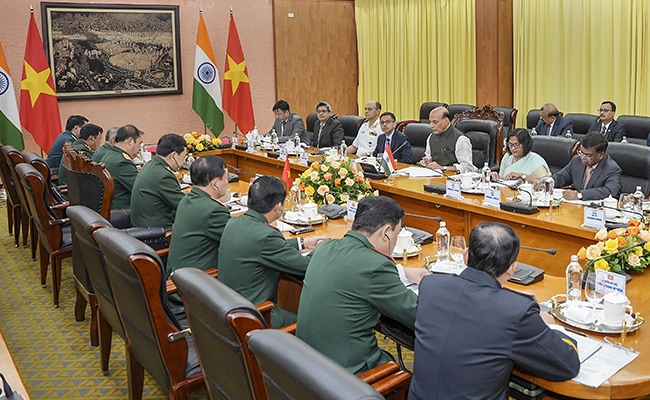
India, Vietnam Ink Military Pact, Can Now Use Each Others Defence Bases
India and Vietnam inked a vision document to further broad-base the "scope and scale" of defence ties by 2030 and sealed a mutual logistics support pact to allow militaries of the two sides to use each other's bases.
India, Vietnam Ink Military Pact, Can Now Use Each Others Defence Bases
India has oil exploration projects in the Vietnamese waters in the South China Sea. India and Vietnam have been boosting their maritime security cooperation in the last few years to protect common interests.
All IndiaPress Trust of IndiaUpdated: June 08, 2022 12:35 pm IST
New Delhi:
India and Vietnam on Wednesday inked a vision document to further broad-base the "scope and scale" of defence ties by 2030 and sealed a mutual logistics support pact to allow militaries of the two sides to use each other's bases for repair and replenishment of supplies.
The signing of the two documents after Defence Minister Rajnath Singh's "fruitful" talks with his Vietnamese counterpart General Phan Van Giang in Hanoi, is seen as a major upswing in India-Vietnam strategic ties amid common concerns over China's increasing muscle-flexing in the South China Sea.
The Memorandum of Understanding (MoU) on mutual logistics support is the first such major agreement that Vietnam has signed with any country. The pact will allow the militaries of the two sides to use each other's bases for repair and replenishment of supplies.
"In these times of increasing cooperative engagements between the defence forces of the two countries, this is a major step towards simplifying procedures for mutually beneficial logistic support and is the first such major agreement which Vietnam has signed with any country," the Defence Ministry said.
It further said that India and Vietnam continue to have the "most trustworthy relations in contemporary times with broader convergence of interests and common concerns." Mr Singh arrived in Vietnam on Tuesday on a three-day visit.
"Had an excellent meeting with General Phan Van Giang, the Defence Minister of Vietnam. We renewed interactions on expanding bilateral cooperation. Our close Defence and Security cooperation is an important factor of stability in the Indo-Pacific region," Mr Singh tweeted.
The joint vision document provides for significant expansion of defence ties in diverse areas by 2030, officials said.
"We had wide-ranging discussions on effective and practical initiatives to further expand bilateral defence engagements and regional and global issues," Mr Singh said.
"After our fruitful deliberations, we signed the 'Joint Vision Statement on India-Vietnam Defence Partnership towards 2030', which will significantly enhance the scope and scale of our defence cooperation," he added.
The signing of the vision document to expand bilateral defence and security ties came amid growing congruence between the two countries in the maritime security domain amid China's increasing muscle-flexing in the region.
Mr Singh is also scheduled to call on Vietnamese President Nguyen Xuan Phuc and Prime Minister Pham Minh Chinh.
Mr Singh and Gen Giang also agreed for the early finalisation of the USD 500 million defence Line of Credit (LoC) extended to Vietnam by India.
The Defence Ministry, in a statement, said the implementation of the projects under the LoC will add substantially to Vietnam's defence capabilities and further Prime Minister Narendra Modi's vision of 'Make in India, Make for the World'.
Mr Singh also announced gifting of two simulators and monetary grants towards setting up a language and IT laboratory at the Air Force Officers Training School for capacity building of the Vietnamese armed forces.
The Defence Minister began his visit by paying respects to late President Ho Chi Minh at his mausoleum in Hanoi.
He also visited Tran Quoc Pagoda, a revered Buddhist temple which reaffirmed the age-old civilisational and people-to-people linkages between the two countries.
Vietnam, an important country of the ASEAN (Association of Southeast Asian Nations), has territorial disputes with China in the South China Sea region.
India has oil exploration projects in the Vietnamese waters in the South China Sea. India and Vietnam have been boosting their maritime security cooperation in the last few years to protect common interests.
The Defence Ministry described Vietnam as an important partner in India's Act East policy and the Indo-Pacific vision, adding both countries share a rich history of civilisational and cultural linkages spanning over 2,000 years.
It said bilateral defence engagements have expanded over a period of time to include wide-ranging contacts between the two countries, including through defence policy dialogues, military-to-military exchanges, high-level visits, capacity building and training programmes and cooperation in the UN peacekeeping and bilateral exercises.
Relations between the two countries were elevated to the level of 'strategic partnership' during the visit of Vietnam's then Prime Minister Nguyen Tan Dung to India in July 2007.
In 2016, during Prime Minister Narendra Modi's visit to Vietnam, bilateral relations were further elevated to a 'comprehensive strategic partnership'.
Vietnam has become an important partner in India's Act East policy and the Indo-Pacific vision.
Comments(Except for the headline, this story has not been edited by NDTV staff and is published from a syndicated feed.)
Jagdflieger
Contributor
Any news on China's base at Hambantota Port?
Any news on China's base at Hambantota Port?
99 year lease to PRC SOE company AFAIK (as part of new agreement given SL not being able to meet loan repayment)...and especially with current economic crisis SL is facing, I doubt SL will be able to renegotiate that again as some of their politicians were pushing for afterwards.
But so far no PLAN ships have been sighted using it.....unlike some other navies:
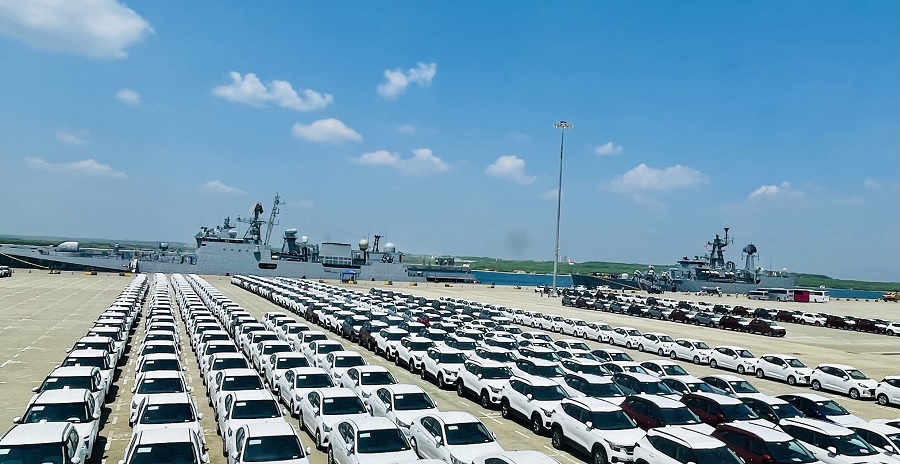
Two Indian Navy ships berth at China-funded port in Hambantota
Two Indian Navy ships berthed at the China-funded port in Hambantota, the Port management said. Hambantota International Port Group Pvt Ltd. said that the Indian ships visited the Hambantota International Port (HIP) for replenishment and husbandry services. The ships which arrived on the 9th w
 colombogazette.com
colombogazette.com
I don't think PRC is interested (at least too soon) in testing these waters and overtly alarming India, Quad etc.
Heavy USN and JMSDF presence all across their eastern seaboard is their main agenda challenge this decade.
Last edited:
Vietnamese ambassador provides some context
Top leaders of the Association of South East Asian Nations(ASEAN) have been invited twice only by India for special meetings, Ambassador Pham Sanh Chau points out, adding the first time India has hosted the just concluded in-person special meeting of Foreign Ministers reflects the "depths of the partnership" and both partners' "growing importance in world politics". ASEAN and India he says "share many things, especially in an open, inclusive, transparent rule based Indo-Pacific that has cemented our relationship".
The envoy also "strongly believes the India-Vietnam relationship has been characterised by the prime importance of defence cooperation". He highlights the outcomes of Defence Minister Rajnath Singh's three-day visit a week ago as Vietnam has "never had cooperation in defence production of this scale with any other country". The 12 high speed patrol boats handed over, he says have "paved the way for the next level of cooperation, namely the Line of Credit of $500 million which is being finalised". The Ambassador acknowledges that a mutual logistics support agreement is also a "very big step forward" considering the country's 'Four No policy' : No military alliances, No siding with one country to act against another, No foreign military bases on Vietnamese territory and No use or threat to use force in international relations. Vietnam's envoy also calls attention to bilateral trade that has increased manifold from just $200 million in 2000 to over $13.2 billion, with India eighth on his country's trading list and the "promising prospects" of India's investments in ports and airports as well as in offshore energy exploration.
Top leaders of the Association of South East Asian Nations(ASEAN) have been invited twice only by India for special meetings, Ambassador Pham Sanh Chau points out, adding the first time India has hosted the just concluded in-person special meeting of Foreign Ministers reflects the "depths of the partnership" and both partners' "growing importance in world politics". ASEAN and India he says "share many things, especially in an open, inclusive, transparent rule based Indo-Pacific that has cemented our relationship".
The envoy also "strongly believes the India-Vietnam relationship has been characterised by the prime importance of defence cooperation". He highlights the outcomes of Defence Minister Rajnath Singh's three-day visit a week ago as Vietnam has "never had cooperation in defence production of this scale with any other country". The 12 high speed patrol boats handed over, he says have "paved the way for the next level of cooperation, namely the Line of Credit of $500 million which is being finalised". The Ambassador acknowledges that a mutual logistics support agreement is also a "very big step forward" considering the country's 'Four No policy' : No military alliances, No siding with one country to act against another, No foreign military bases on Vietnamese territory and No use or threat to use force in international relations. Vietnam's envoy also calls attention to bilateral trade that has increased manifold from just $200 million in 2000 to over $13.2 billion, with India eighth on his country's trading list and the "promising prospects" of India's investments in ports and airports as well as in offshore energy exploration.








